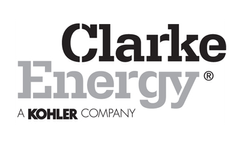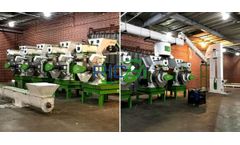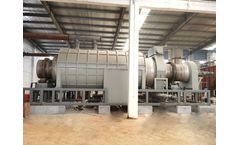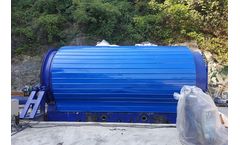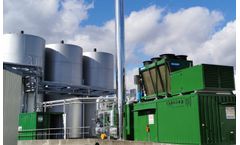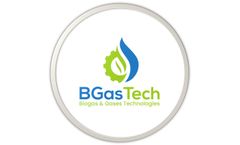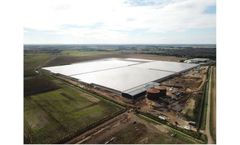Cogeneration Articles
-
Uses of Palm Kernel Shell Charcoal
Palm kernel shell charcoal, a byproduct of the palm oil industry, holds immense potential for various applications across industries. Through the utilization of advanced technologies like the palm kernel shell charcoal making machine, palm kernel shells can be converted into high-quality charcoal, unlocking a range of beneficial uses.Understanding Palm Kernel Shell Charcoal Palm kernel shell ...
-
Auxiliary Boilers Can Reduce Cold-Start Times for CCGTs
Combined cycle gas turbines (CCGTs) play a critical role in providing power grids with additional electricity, supporting reliability and resilience during periods of high demand. Combined cycle power plants that harness energy from both combustion and steam turbines use less fuel overall, and can produce longer run times than traditional peaker plants that have long been used to produce ...
-
Matters Need Attention When Setting Up an Oil Sludge Pyrolysis Plant Business
In the realm of sustainable waste management, oil sludge pyrolysis plants stand as beacons of innovation, promising efficient conversion of industrial waste into valuable resources. However, venturing into this sector demands meticulous planning and consideration of various factors to ensure smooth operations and sustainable profitability.Comprehensive Market Research Before delving into the ...
-
Propane Powered CHP Improving Energy Efficiency of Greenhouse Operations in Greece - Case Study
Agrotikes Ekmetalleyseis IKE, situated in Almyros, Volos, is a greenhouse operator specialising in the cultivation of vegetables distributed throughout Greece. To enhance the energy efficiency of their greenhouse operations, the company selected Clarke Energy Hellas to supply and install a combined heat and power plant (CHP) with optional CO2 recovery. This system is powered by an INNIO ...
-
Medoil Improves Competitiveness and Commitment to Sustainability With Cogeneration - Case Study
Medoil, part of Poulina Group, are a leading manufacturer specializing in production of margarine, vegetable fats, table oils, mayonnaise, and sauces. The company was facing mounting energy costs and environmental pressures, to address these challenges and improve operational efficiency, made a strategic investment in a containerized cogeneration power plant. This innovative solution, designed, ...
-
Middletown Recreation Center Microgrid, USA - Case Study
The City of Middletown’s Department of Public Works, Connecticut chose Clarke Energy to design and engineer a hybrid energy, turnkey microgrid solution to support a large recreation facility. The facility is located on the previous site of the Woodrow Wilson Middle School and is being developed to support the local community including a new recreation office, gyms, pools creating the first ...
-
Supporting tools of biomass pellet mill
What are the sustaining tools for the biomass gas pellet maker production line of the pellet maker manufacturer? What is the manufacturing ability of the biomass pellet mill? What are the advantages of the created gas pellets? Matching power: 37-280kw, manufacturing capability: 0.3 lots - 5 loads/ hr. 1. Benefits of gas pellets: ( 1 ) Avoid waste of raw materials. The formula of ...
-
Pulp and Paper Factory S.A. Choose Clarke Energy in Romania
Combinatul de Celuloza si Hârtie S.A (Pulp and Paper Factory) in Romania, have chosen Clarke Energy to install a combined heat and power (CHP) plant to optimise the utility costs of their operation. The main objective of this investment is to increase operational energy efficiency at CCH S.A. Drobeta Turnu Severin through the implementation of the high-efficiency cogeneration plant. The ...
-
Advice On Looking For A Sawdust Charcoal Making Machine Manufacturer
The ability to convert sawdust into charcoal is feasible with a pyrolysis machine. This can be both large and small machines, ones which can be affordable. For those who have use of vast amounts of sawdust on a daily basis, you may want a complete pyrolysis plant to keep up with your production levels. Sawdust is often useful for other purposes like feeding cogeneration plants to generate ...
-
Three Turnkey CHP Plants Delivered for Amiens Energies - Case Study
Amiens Energies is the public service delegate for the distribution and production of heat for the city of Amiens. Its purpose is to meet the heating and domestic hot water needs in Amiens. Amiens Energies wanted to extend and interconnect its heating network by adding new production units. Amiens Energies produces heat in the form of hot water from several production facilities. The delivered ...
-
How To Put Together Pyrolysis Plant For Optimal Production
Every time a business invests in, and subsequently sets up a pyrolysis plant, it can be difficult to control. This is due to the countless components must work together perfectly to guarantee the proper production of the byproducts. It really is in this process that materials including plastic, as well as organic materials, may be split up into components that can be sold or used. Establishing ...
-
Revico Energies Vertes Utilising Biogas from Cognac Distillation - Case Study
Since 1970, Revico and its subsidiary Revico Energies Vertes have been utilising the by-products of the Cognac sector. Located in Saint-Laurent-de-Cognac (Charente), the company specialises in the treatment of effluents from the production of spirits, such as vinasses or wine dregs. ...
-
Machines and Technologies in Biogas Facilities
MACHINES, EQUIPMENT AND TECHNOLOGIES IN THE BIOGAS LINEIN WWTP A wastewater treatment plant (WWTP), also called a purification plant, has the generic objective of achieving, from black or mixed water and through different physical, chemical and biotechnological procedures, effluent water with better quality and quantity characteristics based on standardized parameters. In general, ...
-
Biogas Treatment in WWTP
Wastewater treatment plants (WWTPs) are facilities that consume large amounts of energy (thermal and electrical), as a result of their operation, they produce large amounts of sludge. The anaerobic digestion of these sludges from wastewater treatment produces biogas, which, due to its concentration in methane (CH 4 ), constitutes a biofuel that can be used for energy production. The best ...
-
Desulfuration of Biogas
ORIGIN, EFFECTS AND TREATMENTS The elimination of hydrogen sulfide (H2S) in biogas becomes a necessity not only to keep the pipelines, machines and equipment involved in its transportation, use and application in good condition but also, and above all, to preserve the life of all the personnel in charge of the operation and maintenance of the biogas production stations, as well as ...
-
Two CoEnergy America CHP Units Powering Cape Codder Resort & Spa
Overview Co-Energy America has worked with the Cape Codder on multiple occasions to develop clean energy solutions. The resort runs two Co-Energy CHP units 24/7 in order to alleviate their large consumption of hot water and electricity. According to the resort, the CHP units reduce the facility’s carbon footprint by up to 70%. The resort has since been recognized by the Green Leaders ...
-
Lanco Tanjore Power Company Ltd - Case Study
Lanco Tanjore is a Gas-based Combined Cycle Power Plant located at Karuppur village in Thiruvidaimaruthur taluk of Tanjore district, situated around 260 kms from Chennai capital of Tamil Nadu. Total Capacity : 120 MW Fuel Source (Natural Gas) : From GAIL (India) Ltd on a long term contract Water Source : From the Kollidam River by the Tamil Nadu Water Supply and Drainage (TWAD) Board Status : ...
By Lanco Group
-
Lanco Kondapalli Power Ltd - Case Study
Lanco Kondapalli Power is an Independent Power Project (IPP) located at Kondapalli Industrial Development Area near Vijayawada in Andhra Pradesh, India. This Combined Cycle gas based Power Project is being developed in three phases. Total Capacity : 1476 MW Fuel Source (Natural Gas) : From GAIL (India) Ltd and M/s Reliance Industries Ltd based on a long term contract Water Source : Upstream of ...
By Lanco Group
-
AGR 217,000m² Glasshouse and Energy Centre with 33MWth Heat Pump System and 9MW Combined Heat and Power Plant - Case Study
AGR is a leading renewable energy company specialising in low carbon energy generation, with over £350m of projects delivered to date in the UK, including a portfolio of gas peaking and combined heat and power (CHP) projects. AGR developed and is the main EPC contractor for a new 217,000m² glasshouse and energy centre in Cambridgeshire and has sold the project to funds managed by ...
-
Project - Biogas purification at Mapocho WWTP
Biogas is a mixture of gases, the main components of which are methane and carbon dioxide, produced as a result of the fermentation of organic matter in the absence of air by the action of a microbial consortium (anaerobic digestion). The composition of the biogas depends entirely on the nature of the waste used and the conditions under which anaerobic digestion is carried out. Generally, the ...
Need help finding the right suppliers? Try XPRT Sourcing. Let the XPRTs do the work for you

